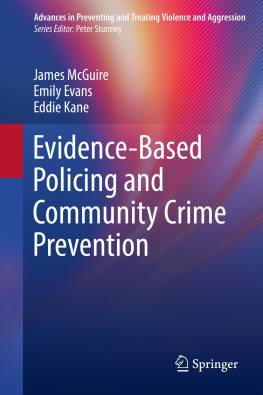The Prevention of Eating Problems and Eating Disorders
In a detailed analysis of the field of eating problems and disorders, this book highlights the connections between the prevention of eating problems and disorders, and theory and research in the areas of prevention and health promotion. It also looks at models of risk development and prevention, specific issues and challenges, the status of current prevention research, and lessons for prevention program development.
In this unique text Levine and Smolak draw on a range of interdisciplinary perspectives, including prevention science, developmental psychology, public health, and neuroscience, to provide a thorough review, history, and critique of the topic in light of a range of empirical studies. The only authored volume with a broad, detailed, and integrated view of theories, research, and practice, this expanded, fully revised and updated new edition features new chapters on dissonance-based approaches, public health, biopsychiatry and neuroscience, gender, culture(s), technology, obesity, protective factors, and ecological approaches.
The Prevention of Eating Problems and Eating Disorders: Theories, Research, and Applications is essential reading for clinicians, academics, researchers, graduate students, upper-level undergraduates, and activists and advocates involved in work pertaining to eating disorders, disordered eating, prevention, health promotion, body image, obesity, and biopsychosocial perspectives.
Michael P. Levine is Emeritus Professor of Psychology at Kenyon College, USA.
Linda Smolak is Emerita Professor of Psychology and Former Deputy Civil Rights/Title IX Coordinator at Kenyon College, USA.
The Prevention of Eating Problems and Eating Disorders
Theories, Research, and Applications
Second Edition
Michael P. Levine and Linda Smolak
Second edition published 2021
by Routledge
52 Vanderbilt Avenue, New York, NY 10017
and by Routledge
2 Park Square, Milton Park, Abingdon, Oxon, OX14 4RN
Routledge is an imprint of the Taylor & Francis Group, an informa business
2021 Taylor & Francis
The right of Michael P. Levine and Linda Smolak to be identified as authors of this work has been asserted by them in accordance with sections 77 and 78 of the Copyright, Designs and Patents Act 1988.
All rights reserved. No part of this book may be reprinted or reproduced or utilised in any form or by any electronic, mechanical, or other means, now known or hereafter invented, including photocopying and recording, or in any information storage or retrieval system, without permission in writing from the publishers.
Trademark notice: Product or corporate names may be trademarks or registered trademarks, and are used only for identification and explanation without intent to infringe.
First edition published by Routledge 2005
Library of Congress Cataloging-in-Publication Data
A catalog record has been requested for this book
ISBN: 978-1-138-22509-1 (hbk)
ISBN: 978-1-138-22510-7 (pbk)
ISBN: 978-1-315-40106-5 (ebk)
Typeset in Times
by Apex CoVantage, LLC
To the memory of a friend and a Bolder Model, Dr. Lina Ricciardelli (19642018), and to the increasing number of researchers, mentors, advocates, and other Bolder Models worldwide who give all of us hope in regard to the future of prevention in the areas of body image, disordered eating, and eating disorders.
Contents
- PART I
Introduction - PART II
Guides to Prevention: Models and Risk Factors - PART III
Guides to Prevention: Specific Issues and Challenges - PART IV
Review of Prevention Research - PART V
Prevention Theory and Research: Lessons From the Field
- PART I
Introduction - PART II
Guides to Prevention: Models and Risk Factors - PART III
Guides to Prevention: Specific Issues and Challenges - PART IV
Review of Prevention Research - PART V
Prevention Theory and Research: Lessons From the Field
Guide
This book is the culmination of nearly 35 years of working together on the issues of body image and disordered eating as professors, theorists, researchers, and advocates. We have been lucky enough to work with many people who inspired, challenged, and taught us about body image, disordered eating, and eating disorders. These colleagues also more generally informed our work philosophically and methodologically. We are reluctant to name them because we know that the list is too long to accurately include here. But we would be remiss if we didnt mention some particularly influential people, who provided us with opportunities to pursue this work. They include (in alphabetical order) Thomas Cash, Janis Crowther, Thomas Cash, Amy Baker Dennis, Ann Frisn, Gail McVey, Sarah Murnen, Dianne Neumark-Sztainer, Niva Piran, Lina Ricciardelli, Catherine Shisslak, C. Barr Taylor, J. Kevin Thompson, and Ruth Weissman.
We began this book with the intent of revising the first edition (Levine & Smolak, 2006), which consisted of 15 chapters covering work from the mid-1980s through early 2005. What developed is much closer to a new book than a classic second edition. We ended up retaining some of the structure, but less than 5% of the verbatim sentences or tables in that first edition. The result is 22 chapters, with a much stronger focus on research and on the phases and cycles of prevention, including dissemination.
In some respects, we should not have been surprised that a fairly straightforward revision was impossible. If we had re-examined our own preface, we would have been reminded of the status of the prevention field when the first book went to press. In early 2005, for the 2006 book, we wrote that in our field (p. ix):
the research has often been marked by ambiguity of purpose, methodology, and outcomes. The result has been controversyabout the meaning of prevention, what can be prevented, the groups most likely to be helped, and the risk of well-intentioned efforts resulting in harm instead of prevention. As recently as the spring of 2000, the Academy of Eating Disorders International Conference included a featured debate as to whether prevention is even possible.
This book was conceived within these strong cross-currents of progress and controversy. Whether one approaches the topic of prevention as a beginner or as an expert, a thorough reading of the prevention literature in our field makes one key point very clear: Efforts to prevent eating problems and disorders have not typically been well rooted in general prevention theories and established prevention methodologies.
Such basic controversies, framed by ambiguous findings and inconsistent methodology, are all but forgotten at the outset of 2020. This transformation is attributable in large part to the ongoing, exciting, and forward-looking growth of the eating disorders prevention field since 2005. This growth is attributable to seven interrelated factors that we attempt to address throughout this second edition. The first factor is the well-documented success of several prevention programs, such as the Body Project and Student Bodies. The second factor is the integration of eating disorders prevention with the overlapping fields of prevention science and public health. The third factor is the use of metaanalysis as a means of clarifying what we know with a reasonable degree of confidence, what we dont know, and what methods we might use to transcend our ignorance while minimizing forms of bias.











